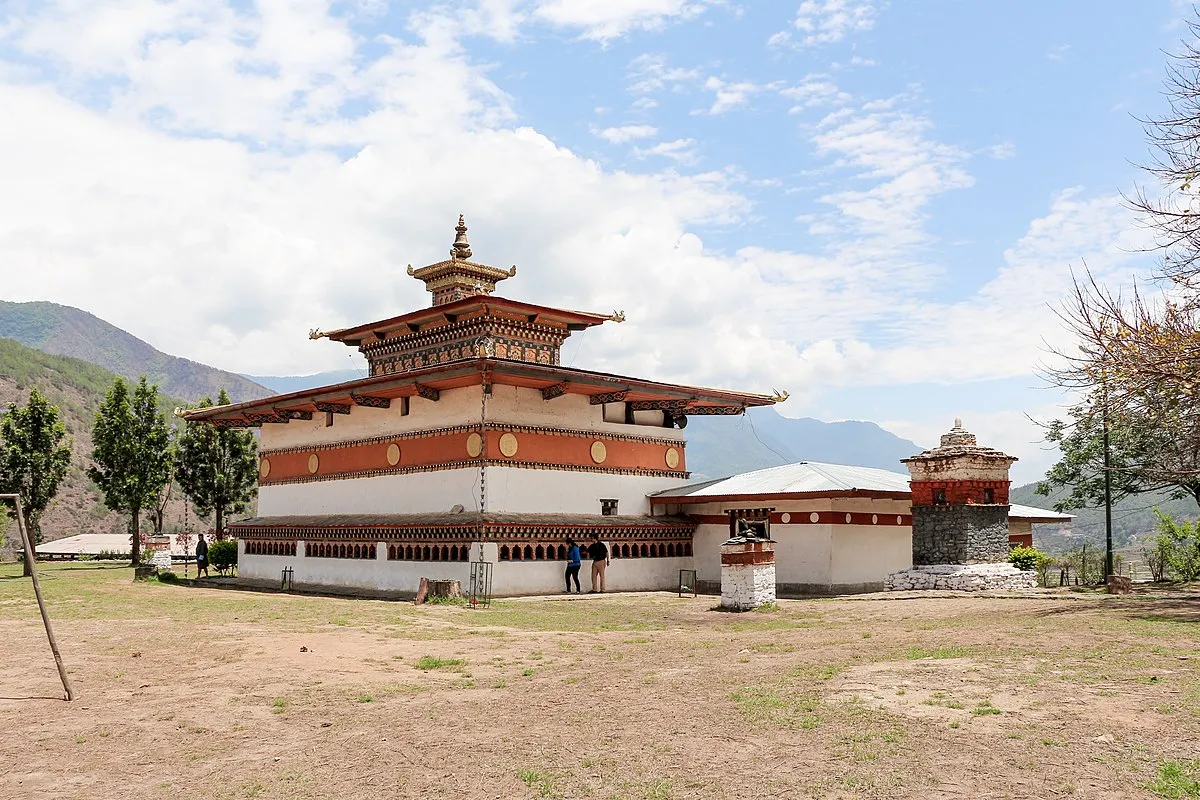1. Overview
The National Textile Museum, located in Thimphu, Bhutan, is one of the country’s foremost cultural institutions preserving the art of traditional weaving. Opened in 2001 under the patronage of Her Majesty Queen Mother Sangay Choden Wangchuck, the museum is operated by the Royal Textile Academy. It offers visitors an in-depth look at Bhutan’s unique textile traditions, including rare royal garments, weaving tools, natural dyes, and regional dress styles. The museum plays an essential role in both cultural preservation and the promotion of Bhutanese identity through fabric.
Location – Google Maps Link
2. History
- Established in 2001 to safeguard and promote Bhutanese textile heritage
- Initiated under the patronage of Queen Mother Sangay Choden Wangchuck
- Operated under the Royal Textile Academy of Bhutan
- Displays both ancient and contemporary textile creations
- Houses traditional weaving looms and tools for live demonstrations
- Features rare textiles woven from silk, wool, and cotton
- Contains ceremonial dress worn by Bhutanese royalty
- Divided into two sections: Weaving Techniques & Textile Gallery
- Conducts workshops and educational programs for students and tourists
- A major site for academic textile research in Bhutan
3. What Makes National Textile Museum Popular?
The museum is popular for offering an authentic and educational journey through Bhutan’s textile history. Its rich displays, live weaving demonstrations, and access to royal clothing collections attract both culture enthusiasts and curious travelers. Visitors can explore the diversity of Bhutanese dress from various regions and understand the deep symbolism behind patterns, colors, and weaving styles.
4. Overall Ratings (1 to 5 Stars)
Overall Rating: ⭐⭐⭐⭐⭐ (5/5)
Historical Significance: ⭐⭐⭐⭐⭐ (5/5)
Scenic Beauty: ⭐⭐⭐⭐☆ (4/5)
Cultural Experience: ⭐⭐⭐⭐⭐ (5/5)
Accessibility: ⭐⭐⭐⭐⭐ (5/5)
5. Weather
Best Time to Visit: March to May and September to November
Temperature Range: 10°C to 25°C
Ideal conditions for comfortable sightseeing and museum hopping
6. Nearest Five Hotels
- Le Méridien Thimphu – Luxury with easy access to cultural spots
- Taj Tashi Bhutan – Elegance, tradition, and fine service nearby
- Hotel Osel – Modern comfort in central Thimphu
- Norkhil Boutique Hotel & Spa – Boutique stay with great amenities
- Hotel Druk – Centrally located heritage-style accommodation
7. Timings
Open: Monday to Saturday
Hours: 9:00 AM – 4:00 PM
Note: Closed on Sundays and government holidays
8. Time Required to Visit
Visit Duration: 1 to 1.5 hours
Perfect for a guided tour and time to explore exhibits at your own pace
9. Entry Fees & Ticket Booking Details
Entry Fee: BTN 150 for tourists, free for locals and students
Booking: No advance booking required; guided tours may be arranged on arrival
10. Things to See & Do
- Observe traditional Bhutanese weaving techniques
- View ceremonial robes of Bhutanese monarchs
- Explore regional textile styles and patterns
- Attend live demonstrations and educational sessions
- Shop for authentic handwoven products at the museum gift shop
11. Best Time to Visit
Season: Spring (Mar–May) and Autumn (Sep–Nov)
Time of Day: Late morning or early afternoon for best light and guided tours
Day of Week: Weekdays for fewer crowds and more interaction
12. Nearest Parking Spots
- On-site parking available for private vehicles and taxis
- Public parking spaces located nearby
- Easily walkable from nearby city hotels
13. Tips for Visitors
- Dress respectfully as it’s a cultural institution
- Photography may be restricted in certain exhibits—ask staff
- Visit the gift shop to support local weavers
- Combine with nearby museums for a full cultural tour
- Ask about any ongoing workshops or exhibitions
14. How to Reach the Place
By Car: 5–10 minutes from central Thimphu
By Taxi: Widely available throughout the city
By Tour: Often included in Thimphu cultural tour packages
15. Nearby Attractions to Combine for the Visit
- Royal Textile Academy – Conservation-focused textile center next door
- Folk Heritage Museum – Insight into Bhutanese rural life
- National Memorial Chorten – Spiritual and community prayer site
- Tashichho Dzong – Government and religious fortress
- Simply Bhutan Museum – Interactive museum on traditional lifestyles



